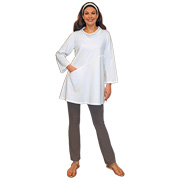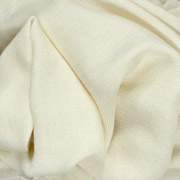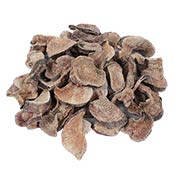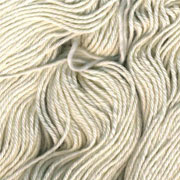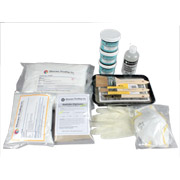This specially formulated indigo is already 60% reduced, therefore, it allows you to use Soda Ash instead of nasty Lye in the dye vat. Extremely easy to use, Pre-Reduced Indigo makes setting up an Indigo vat almost effortless. There is no need to grind, then paste up the Indigo granules because they dissolve easily in water. You can have the vat prepared in about 10 minutes!
Precautions: Please use an organic fume respirator when working with the Thiourea Dioxide (AKA Dyehouse Color Remover aka Thiox) or Sodium Hydrosulfite (has a better shelf life, and is more stable). Do not use utensils or dishes used for eating. Wear gloves. Always work in a well ventilated area.
When using bulk pre-reduced Indigo, the following recipe provided to us by the manufacturer fits well in a 5 gallon bucket:
- 20 grams Pre-Reduced Indigo
- 50 grams Thiourea Dioxide or Sodium Hydrosulfite
- 100 grams Soda Ash
- 4 gallons water
Directions:
Make vat with warm water, about 80 to 90 degrees Fahrenheit. A cylinder shaped container with a tight fitting lid works the best. Add the Indigo and the Thiourea Dioxide or Sodium Hydrosulfite to the vat and stir.
Try to dissolve the Soda Ash by adding a little boiling water to it. It won't completely dissolve. Add the soda ash to the vat. With a dowel or stirring stick, stir in a circle, going in one direction. Slow down and reverse the direction of the stirring, dragging your stir stick along the outer edge of the vat before removing your stir stick. This will bring the foam that has formed, which is called the flower, to the center. Let the mixture settle. The liquid should be a clear yellowish-green color.
When you are ready to dye, wet your fabric and squeeze out any excess water. Skim the flower and crust off the top of the vat and set aside. Enter your wetted-out fabric slowly and manipulate under the surface of the water. You don't want to stir up the sediment at the bottom of the vat. Nicely, you get way less with this product than with natural indigo. Squeeze the fabric as you lift it out trying not to drip or make bubbles, as this introduces more oxygen into the vat. When you lift your fabric out, it will be a yellow-green color. As the air hits the fabric, the indigo will gradually oxidize and the fabric will turn blue. After 15 to 20 minutes, you can re-dip your fabric for darker shades, or rinse and un-tie (if doing tie-dye) and wash.
When you are finished dyeing, put back the flower and stir the vat in the same circular manner as described above. Put a lid on the vat and it will be ready for another dye session when you need it. The indigo vat can last for several weeks or months if properly tended.
Keeping your Indigo Vat happy:
Now that you've fallen in love with your Indigo Vat you'll want to know how to keep it as healthy and happy as possible. Indigo Vats love to be useful so regular dyeing keeps your connection to your vat strong. An indigo vat can have a very long life if used and tended to regularly. As mentioned above, the best type of container for a vat is a cylinder shape with a tight fitting lid. This will give you room to dye the fabric without it touching the bottom and minimize the surface area that is in contact with air. All measures below presume a 4 gallon vat in a 5 gallon container.
When you visit your vat you should alway check in with it.
If you notice blue specks or if the vat has gone more blue than the yellow-green we all love, adding a bit of Thiox (Thiourea Dioxide) or Hydros (Sodium Hydrosulfite) is in order. Use ½ teaspoon of thiox or hydros dissolved in a cup of warm water and gently add that to your vat. Stir the vat carefully, return the lid to the container and let it rest for about 15 minutes.
If you are noticing a milkiness to your vat or seeing white specks, add 1 teaspoon soda ash dissolved in a cup of warm water. Again, add to the vat gently, stir carefully and return the lid to the container and let it rest for about 15 minutes. .
If the color seems grey & weak you'll want to add some pre-reduced Indigo. Pre-dissolve 1 to 2 teaspoons of the pre-reduced indigo to about a cup of warm water. And again, add to the vat gently, stir carefully and return the lid to the container and let it rest for about 15 minutes.
With any of these additions you'll always want to let the vat sit for about 15 minutes after the addition. After the rest period check the vat, if it has corrected - nice yellow/green, speckles gone, no milkiness, no anemia, you are good to go.
If it is still looking too blue or speckley or milky or anemic add another small amount of the appropriate additive for the current issue. Use measures similar to the original addition. It is important to add small amounts of amendments at a time and allow the vat to rest between each addition.
Some other things to keep in mind:
Temperature - "Hotter is better" ideally an Indigo vat is happiest at about 95 - 100 degrees F. If your vat is especially cooler than that a couple of heating pads on the outside of the container can help. Wrap the heating pads against the container with an old blanket or use an old electric blanket in place of the heating pads.
Ph - 10 is a good ph level.
Over-reduction - if you are noticing that your fabric just isn't getting any darker there is a possibility that your vat is over-reduced. To allow for a bit of oxygen to the vat, remove the lid from the container and gently stir the vat in one direction for a few moments. Leave the lid off for about a half hour and proceed with your dyeing. Keep in mind that not allowing the dye to oxidize on the fabric between dips can also prevent darkening - more frequent, shorter dips with good oxidation between each dip is always going to produce better results.
Jacquard recommends a post dye rinse with vinegar - about 1 cup per gallon of water.




